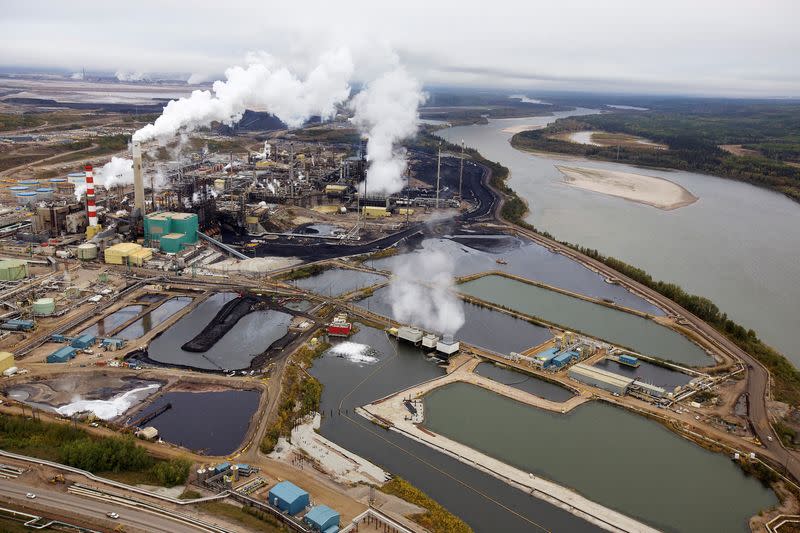Canada's oil sands sector aims to release treated tailings water into river

By Nia Williams
(Reuters) - Canada's oil sands mining industry on Thursday outlined proposals to release treated water from tailings ponds into northern Alberta's Athabasca River, a move environmental groups say risks damaging one of the world's largest freshwater deltas.
Unlike other extractive industries in Canada, oil sands firms are not allowed to release treated tailings water.
New federal regulations, expected to be finalised in 2025, will govern how tailings could be safely drained into the Athabasca, a 1,231 km river that originates in the Canadian Rockies and flows into Lake Athabasca.
Tailings - a toxic mix of water, clay, sand, residual bitumen and trace metals - are a byproduct of extracting bitumen from mined oil sands and are stored in huge engineered ponds, some of which have been accumulating water since the 1960s.
The total volume of oil sands tailings grew to 1.36 trillion cubic metres in 2020, according to the Alberta Energy Regulator, from 1.07 trillion cubic metres in 2017.
Industry members say companies need to be able to treat and release the water so they can reclaim land disturbed by oil sands operations.
"The water has to go someplace," said Rodney Guest, director of water and closure at Suncor Energy.
"To this date, we have been doing everything but releasing the water ... while other (water management) options are in play and we have used many of them, they cannot replace the need for water release."
Water volumes stored in tailings ponds equalled about 2% of the annual flow of the Athabasca River, but would be released over many years, said Charles Dumaresq, the Mining Association of Canada's (MAC) vice president of science and environmental management.
Producers say they have a number of methods to treat tailings. Suncor's Guest said the cost would be substantial but difficult to quantify until regulators determine exactly what criteria companies have to meet.
Environmental campaigners are skeptical.
"Dumping the tailings is not safe, there has been no independent testing to prove what (oil sands companies) are saying is true," said Jesse Cardinal, executive director of Keepers of the Water.
MAC's presentation took place as a United Nations team began a mission to determine whether Wood Buffalo National Park, which lies downstream of the oil sands, should be added to a list of endangered World Heritage Sites.
Wood Buffalo, located in northeastern Alberta and the southern Northwest Territories, is Canada's largest national park. It contains the vast Peace-Athabasca freshwater delta, which has been slowly drying up due to climate change and hydroelectric developments upstream, prompting action by UNESCO.
(Reporting by Nia Williams in Revelstoke, British Columbia; Editing by Matthew Lewis)

 Yahoo Movies
Yahoo Movies 
